

International Symposium of Byzantologists
NIŠ AND BYZANTIUM XV
“Byzantium across time and space“
Dr Miša Rakocija
"Our medieval art is closely related to the Byzantine art and
how Byzantine artists are considered in the world,
the same way our artists will be considered"
Milan Kašanin
It has been 15 years since the first time prominent researchers gathered together in Niš with the idea of a newly established scientific symposium "Niš and Byzantium" to be profiled as one of the world's eminent traditional meetings of Byzantologists. This year, marking this small jubillee, we can say that we have succeeded. "Niš and Byzantium" has been listed among prominent international scientific conferences and the city of Niš has been known as the birthplace of Emperor Constantine the Great and an important center and place of study of Byzantine civilization, culture, art and spirituality. International symposium "Niš and Byzantium" has been highly ranked within the scientific circles and also particularly of note among the citizens of Niš; it became a sort of recognizable brand of the city of Niš.
Over these fifteen years of its lasting, around 600 prominent researchers and scientists (of which 10 are academicians) from over 20 countries, presented their work papers. Each symposium is followed by printed collection of works as a part of the proceedings in electronic version (CD), which also can be found on the website www.nisandbyzantium.org.rs within the the official internet presentation of the City of Niš. The Proceedings is always promoted at the opening of the next year symposium. 14 volumes has been printed in continuity so far, while Proceedings Vol. 15 is in preparation. Each volume is between 500 and 600 pages. For the occasion of marking the 1700th anniversary of the Edict of Milan, in 2013 a special edition "Niš and Christian heritage" was published. A total of about 9,000 pages of new knowledge and discoveries in history, art history, archeology, architecture, theology, cultural heritage protection. There is no serious researcher who does not use this literature and so will be even many decades after us.
The wish of the organizers is to contribute to a better understanding of the Byzantine past of Niš, as well as its reverberation to the later spiritual, cultural and artistic creative endeavors in Niš, the Balkans and Europe. The task of the Symposium is to divert the attention of the European scholarly public to the significance of Niš for the entire Christian world and to point out the effects of the Byzantine culture on the modern Europe. The misunderstandings, lack of comprehension and old delusions related to Byzantium shall fall into oblivion due to scientific argumentation. Cultural convergence leads to a national consolidation, to the long-forgotten Byzantine dream about the unity of the Empire.
A significant achievement of this symposium with apparent scientific results represents popularization of Byzantology as a science, affirmation of the city of Niš, established cooperation between colleagues, new contacts, professional relations, exchange of knowledge and experience. A large number of young researchers presented their findings for the first time, with visible nervousness, right here in Niš. Nowadays, some of them has long PhDs and those others have become academicians. Over these years the best people we had , unfortunatelly, left us, passed away, leaving behind the work facts that are timeless. The first who left us was academician Dejan Medaković, and afterwards, unfortunately, prof. Aleksandar Jovanović, PhD, prof. Radovan Bigović, PhD, Dr. Slobodan Mileusnić, prof. Miodrag Jovanovic, PhD and Dr. Tzone Draževa.
The theme of this scientific meeting is both Niš and Byzantium, every year with recall of a particular person or a significant event. The first gathering of Byzantologists in Niš was held in 2002, with the symbolic dedication subtitle "Niš and Byzantine Art", opened by then president of SANU (Serbian Academy of Science and Art) academician Dejan Medaković. The next was in 2003 when prominent researchers gathered around the theme of "Byzantine basics of modern Europe". The Symposium was opened by Minister of Culture at that time, Mr. Branislav Lečić. In 2004 the Byzantologists meeting in Niš was symbolicaly dedicated to the culturally most tragic event in the history of Europe - "800 years from the fall of Constantinople". The meeting was opened by Dr. Radivoje Radić. In 2005 the symposium was dedicated "To the glory of Gabriel Millet" and was opened by academician Cvetan Grozdanov. In the following year, 2006, the theme was "1700 years of the proclamation of the Emperor Constantine", with the support of Ministry for education and religion of the Republic of Greece.
In the year 2007 the public was reminded of "1760 years since the death of St. Emperor Constantine the Great" and the symposium was opened by Dr. Caroline Snively. In 2008 participants' knowledge sets were directed "In honor of St. Emperor Constantine and Empress Helena" and the symposium was opened by Academician Vera Bitrakova Grozdanova. The 8th gathering of Byzantologists in 2009 was " In the Memory of academician Dejan Medaković", marked with commemorative speech of the academician Dinko Davidov. In 2010 we started with the symbolic dedication "Meeting the anniversary of the Edict of Milan", with the introductory words of Dr. Dragan Vojvodić. "Niš – the martyriopolis and the imperial city" was the subtitle of the 10th meeting in 2011, opened by Austrian academician Renate Pillinger.
In 2012, the 11th gathering "St.Emperor Constantine and the heritage of Europe" was opened by academician Ljubomir Maksimović. In the jubilee year 2013 - "Constantine, in hoc signo vinces - 313-2013" the symposium was opened by academician Slobodan Curčić. In 2014, "Stefan Nemanja between East and West" was opened by Dr. Srđan Pirivatrić. In 2015 - "Cities and citizens of the Byzantine world" was opened by a corresponding SANU member Miodrag Marković, PhD, while in 2016 , the 15th reunion with the subtitle "Byzantium through time and space" was opened by a corresponding member of the French Academy of Sciences and Arts Dr. Vujadin Ivanisević.
Civilization, spiritual and art legacy of Byzantium is not chronologically nor territorially limited, and as such, it can be followed through time and space. This is the basic characteristic of the Byzantine Empire, whose accomplishments extend through time from the IV century to the present day, and is laid out on a vast area covering at least three continents. Byzantine heritage is firmly embedded in the foundations of modern European civilization. Without Byzantines Europe would not be what it is, Christian, and a beacon of civilization progress of entire mankind that runs through time and space for centuries. Particularly prominent place there belongs to the Orthodox peoples as guardians, persistent heirs and direct successors of the Byzantine heritage.
Today we also see Byzantium and its art as one of the biggest artistic creativity. That is increasingly accepted by thinking Europe. But it was not always so. Only in the late XIX century intellectual elite of Europe will show again the interest for Byzantium. Scientific-research works of the first Byzantologists changed the picture of Byzantium. Here we mention some of the first Byzantologists: Kondakov, Dile, Millet, Grabar etc. Thanks to them, the public has got acquainted with the character of the Byzantine heritage. International congresses of Byzantologists have played a crucial role in that way.
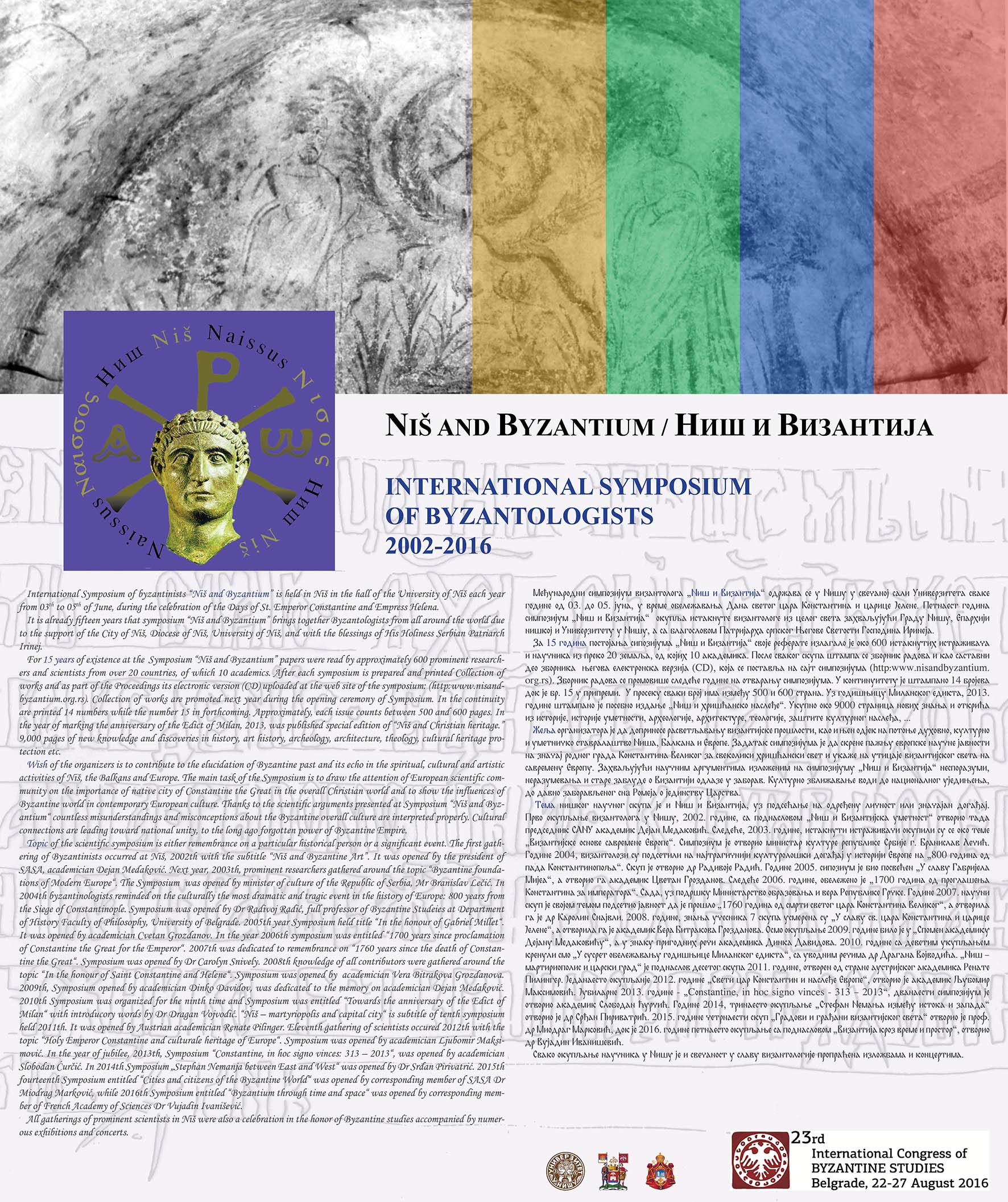
Presentation poster "Niš and Byzantium"
First international congress of Byzantologists was organized on the initiative of the Roman scientist Nikola Jorge in Bucharest in 1924. The second congress of Byzantologists was held in Belgrade in the spring of 1927. And again after 89 years, Belgrade hosted Byzantologists from all around the world, from 22 to 27 August 2016, at the 23rd International Congress of Byzantine Studies, with the theme "Byzantium - the world of changes".
To change the image of the Byzantine Empire a considerable contribution was made also by International Symposium of Byzantologist "Niš and Byzantium", the symposium which exists already 15 years and brings together connoisseurs of both Niš and Byzantium from all over the world. Therefore, this year's symposium "Niš and Byzantium" was awarded a special honor to be presented at a major international congress of Byzantologists in Belgrade.
Scientific reputation of the symposium "Niš and Byzantium" was a good reason to make it be a part of the International Congress of Byzantologists and be presented in Belgrade. The imposing affirmative poster (155x130cm) in picture and words showed the importance and achievements of the international symposium "Niš and Byzantium" which is fifteen years continuously held thanks to the efforts of the City of Niš, Niš Orthodox Eparchy, University of Niš and Niš Cultural Center, with the blessing of His Holiness Serbian Patriarch Irinej.
At the Book Fair, as the accompanying event of the congress of Byzantologists, Niš Cultural Centre presented the Preceedings of "Niš and Byzantium".
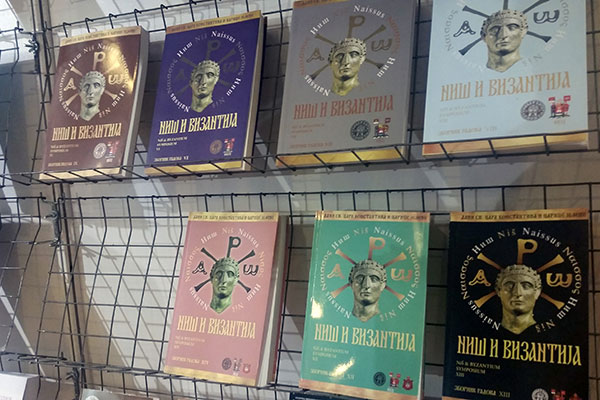
Proceedings "Niš and Byzantium" at the Book Fair of the Congress of Byzantologists in Belgrade
Distinguished presence of Niš symposium at the International Congress of Byzantologists was a great honor and a firm confirmation of its high rank within the scientific world, while the city of Niš gained special respect and recognition as a center of study of Byzantine art, culture, civilization and spirituality. The city of Niš got a lot on its reputation and significance by that.
Byzantology as a science is a living organism. Its achievements have to be clearly presented and available to everyone. This is necessary in order to better understand that we are part of Byzantine history and the history of Byzantine art which is still ongoing. Byzantologists' work has to attract more interest in Byzantium, its history, culture, art, spirituality and to perceive better its effect on peoples through time and space. The great truth is that "Byzantine art cannot be revealed only by observing it; it is necessary to look deep into it, to empathize with it to interweave, it is needed to find it in yourself".
Every gathering of Byzantinologists in Niš is traditionally held with the blessings of His Holiness Serbian Patriarch Irinej, so it was also this year thanks to the Bishop Teodosije who passed the blessing words of His Holiness.
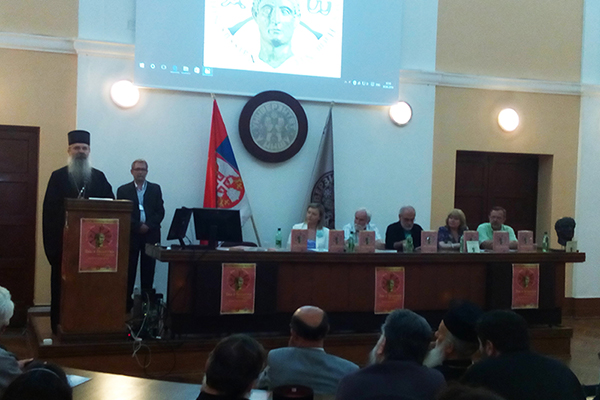
Opening ceremony of the symposium, Bishop Teodosije
After the introduction word of dr Miša Rakocija, the participants were welcomed by Mayor of Niš Mr. Zoran Perišić, PhD and Niš University vice-rector Mr. Nenad Pavlović, PhD.

Introduction word by Dr. Miša Rakocija
The symposium was opened by a corresponding member of the French Academy of Sciences and Arts Dr. Vujadin Ivanisević.
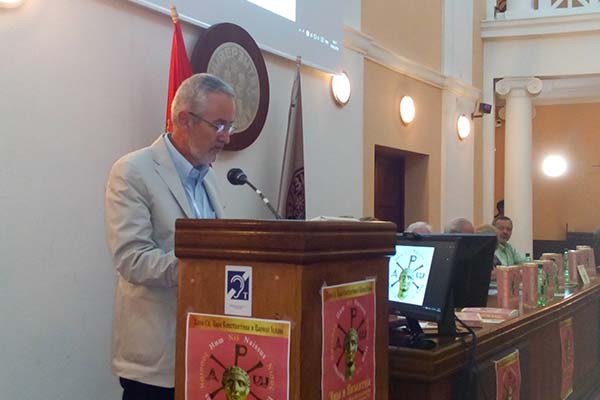
Opening of the symposium, Dr. Vujadin Ivanisević
The Proceedings of Niš and Byzantium XIV was presented by Dr. Branislav Cvetković. Our jubilee was attended also by guests from Greece and on their behalf the meeting was addressed by father Ermolaj Masaras from Patra, who pointed out the significance and the importance of preserving this scientific meeting which gathers together good connoisseurs of Byzantium.
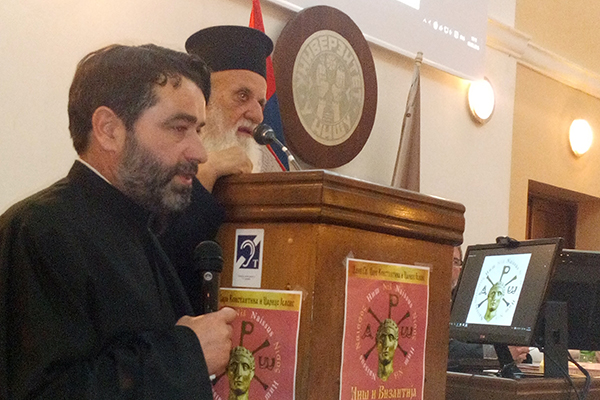
Archpriest stavrophor prof. Ermolaj Masaras, Patra
On the occasion of this jubilee Dr. Franc Curk opened the exhibition "Niš and Byzantium - 15 years later", by the authors, young architects Nadežda Rakocija and Ana Curk.
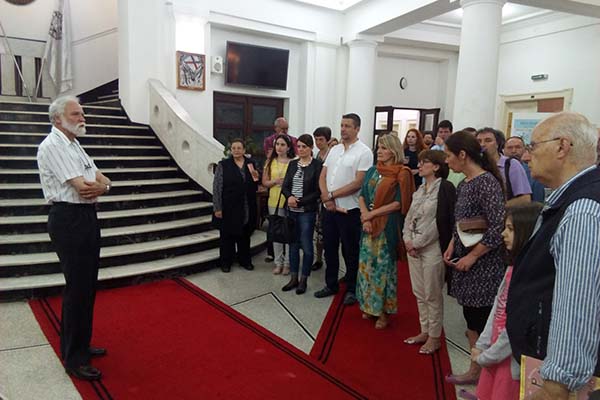
Dr Franc Curk, Opening of Exhibition "Niš and Byzantium - 15 years later"
Fifteen posters have taken us through the history of the symposium "Niš and Byzantium", seen through the eyes of photographers and journalists point of view.

Exhibition "Niš and Byzantium - 15 years later"
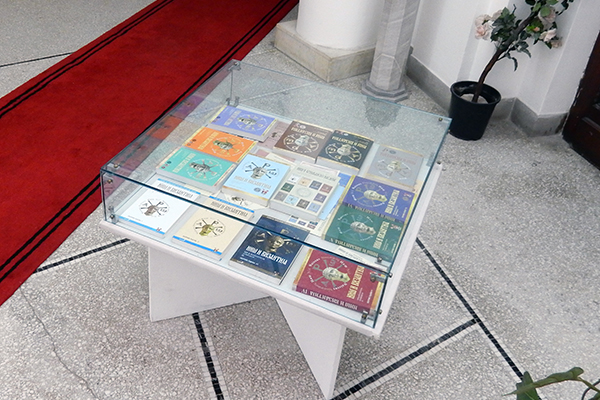
"Niš and Byzantium" symposium editions
A special delight for eyes and soul was the exhibition "The Signposts" by Dragan Todorović (Belgrade), senior adviser at the Institute of Art History. The exhibition was opened by Dr. Janis Sisiou (Kastoria, Greece).
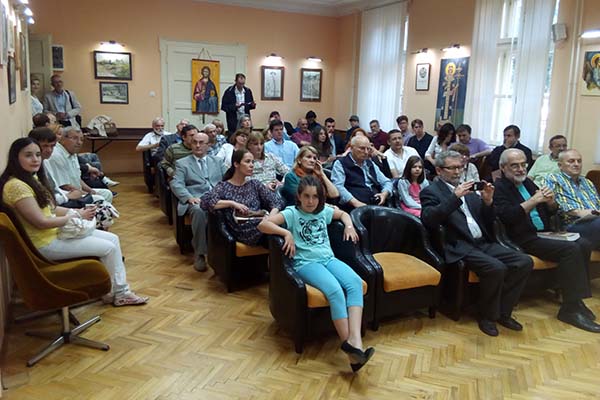
Opening of Exhibition " The Signposts" by author Dragomir Todorović (Belgrade)
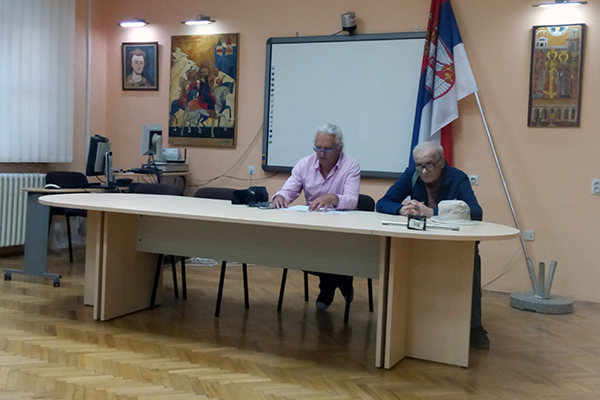
Dragomir Todorović and Dr. Janis Sisiou (Kastoria, Greece) at the exibition opening
In front of our eyes frescoes with figures of saints and famous Serbian emperors resurrected again as well as old letters, illuminated manuscripts, Holy Mountain landscapes, famous explorers, but also a famous poet Milutin Bojić as a forgotten Niš observer.
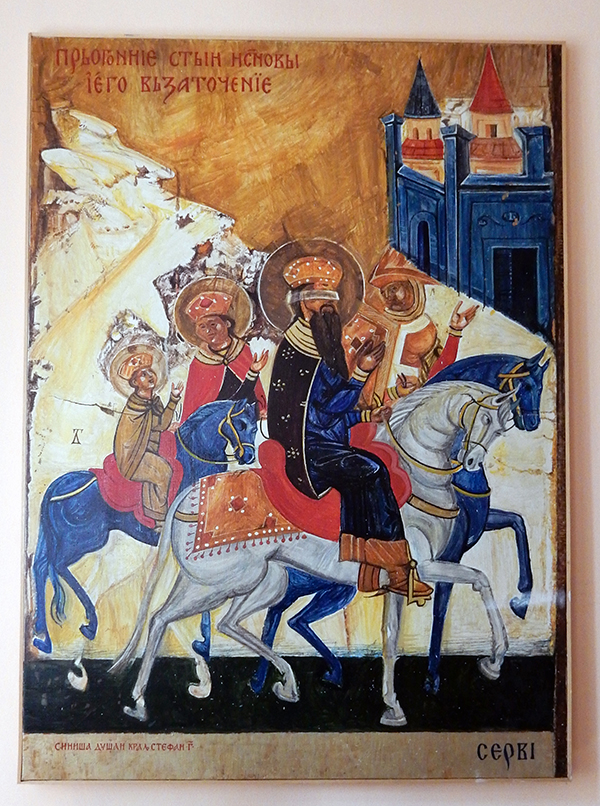
Exhibition "The Signposts", by Dragomir Todorovic
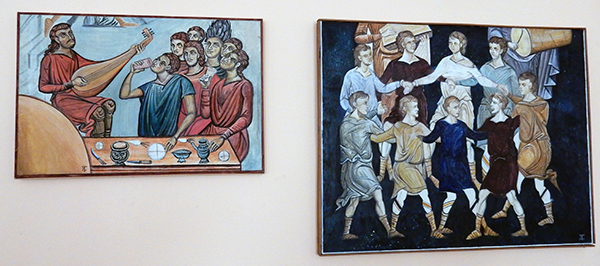
Exhibition "The Signposts", by Dragomir Todorovic
The opening ceremony of the fifteenth symposium "Niš and Byzantium" was magnified by the performance of male vocal group "Constantine". It was an opportunity to award this vocal group an appropriate gift painting by the author Dragomir Todorovic, and the book "Constantine's city – Old Christian Niš" by Miša Rakocija.
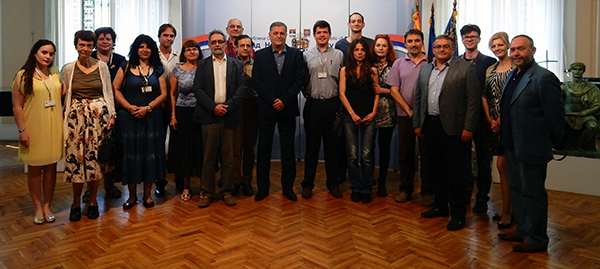
Participants of the symposium
Together with us, 33 participants and from the United States, Montenegro, Greece, Crimea, Poland, Germany, Spain, Turkey, Bulgaria, Macedonia, Russia, Hungary, Italy, France and Serbia shared the joy of this small jubilee celebration. Following the established tradition, the symposium "Niš and Byzantium" XV ended with the reception at the Niš City Hall, where participants evaluated the meeting, expressed their opinions about the symposium and emphasized its international reputation in the presence of media. At the very end, there was a tour of cultural and monumental heritage of the city of Niš.
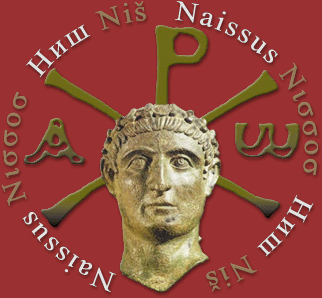
![]()


